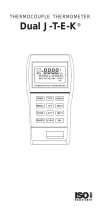
Notices
© Agilent Technologies, Inc. 2009-
2012
No part of this manual may be repro-
duced in any form or by any means
(including electronic storage and
retrieval or translation into a foreign
language) without prior agreement and
written consent from Agilent Technolo-
gies, Inc. as governed by United States
and international copyright laws.
Manual Part Number
34972-90001
Third Edition, May 2012
Printed in Malaysia
Agilent Technologies, Inc.
900 S. Taft Ave.
Loveland, CO 80537 USA
Adobe, the Adobe Logo, Acrobat and
the Acrobat Logo are trademarks of
Adobe Systems Incorporated.
Microsoft is either a registered trade-
mark or a trademark of Microsoft Cor-
poration in the United States and/or
other countries.
Windows and MS Windows are U.S.
registered trademarks of Microsoft
Corporation.
Software Updates/Licenses
Periodically, Agilent releases software
updates to fix known defects and incorpo-
rate product enhancements. To search for
software updates and the latest documenta-
tion for your product, go to the product page
at:
www.agilent.com/find/34970A
www.agilent.com/find/34972A
A portion of the software in this product is
licensed under terms of the General Public
License Version 2 ("GPLv2"). The text of
the license and source code can be found at:
www.agilent.com/find/GPLV2
This product utilizes Microsoft Windows
CE. Agilent highly recommends that all
Windows-based computers connected to
Windows CE instruments utilize current
anti-virus software. For more information,
go to the product page at:
www.agilent.com/find/34970A
www.agilent.com/find/34972A
Declaration of Conformity
Declarations of Conformity for this
product and for other Agilent products
may be downloaded from the Web. Go
to http://regulations.corporate.agi-
lent.com and click on "Declarations of
Conformity." You can then search by
product number to find the latest Decla-
ration of Conformity.
Warranty
The material contained in this
document is provided “as is,” and
is subject to being changed, with-
out notice, in future editions.
Further, to the maximum extent
permitted by applicable law, Agi-
lent disclaims all warranties,
either express or implied, with
regard to this manual and any
information contained herein,
including but not limited to the
implied warranties of merchant-
ability and fitness for a particu-
lar purpose. Agilent shall not be
liable for errors or for incidental
or consequential damages in con-
nection with the furnishing, use,
or performance of this document
or of any information contained
herein. Should Agilent and the
user have a separate written
agreement with warranty terms
covering the material in this doc-
ument that conflict with these
terms, the warranty terms in the
separate agreement shall control.
Technology Licenses
The hardware and/or software
described in this document are fur-
nished under a license and may be used
or copied only in accordance with the
terms of such license.
Restricted Rights Legend
If software is for use in the perfor-
mance of a U.S. Government prime
contract or subcontract, Software is
delivered and licensed as “Commercial
computer software” as defined in
DFAR 252.227-7014 (June 1995), or as
a “commercial item” as defined in FAR
2.101(a) or as “Restricted computer
software” as defined in FAR 52.227-19
(June 1987) or any equivalent agency
regulation or contract clause. Use,
duplication or disclosure of Software is
subject to Agilent Technologies’ stan-
dard commercial license terms, and
non-DOD Departments and Agencies
of the U.S. Government will receive no
greater than Restricted Rights as
defined in FAR 52.227-19(c)(1-2)
(June 1987). U.S. Government users
will receive no greater than Limited
Rights as defined in FAR 52.227-14
(June 1987) or DFAR 252.227-7015
(b)(2) (November 1995), as applicable
in any technical data.





















